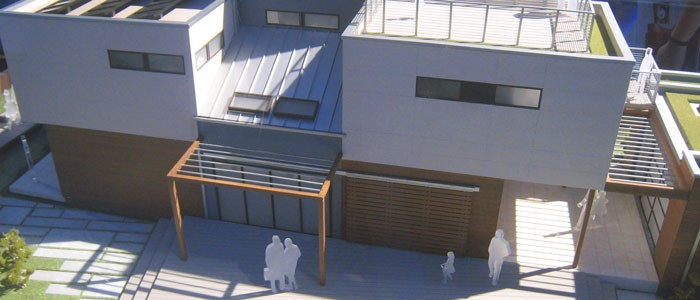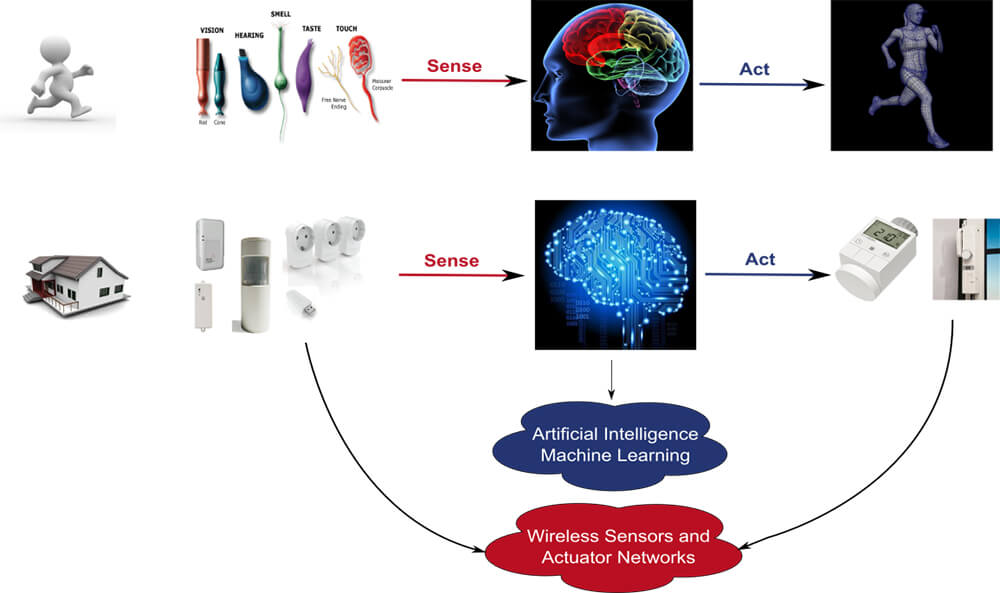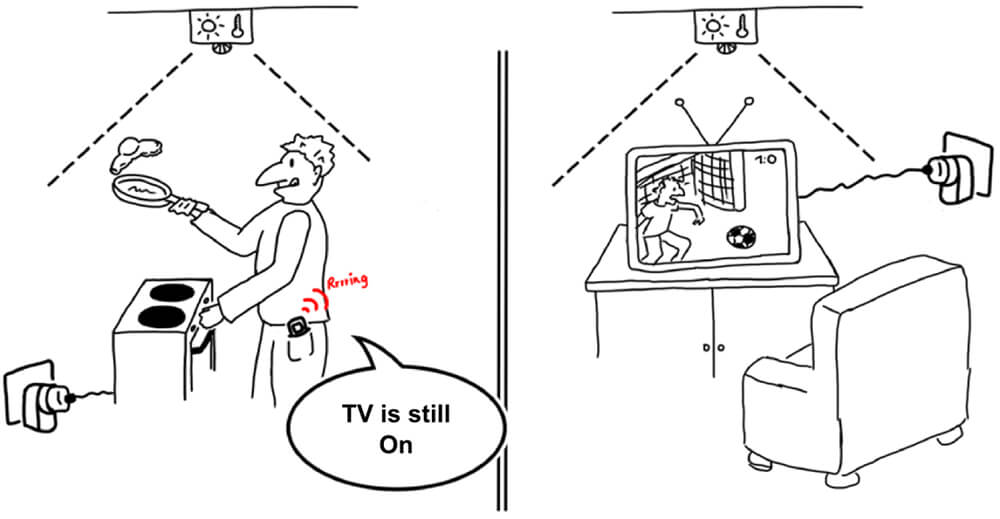Smart Home: Are our homes going to be intelligent in the near future?
As technology achieves great progress in the areas of wireless sensor networks and machine learning, the idea of smart homes is starting to materialize. As a part of the research community, we in Multimedia Communications Lab decided to pursue the goal of making our future life smarter and more comfortable by utilizing the means of Information and Communications Technology (ICT).
The idea of smart homes has its roots back in the past where several science fiction novelists have anticipated a future where smartness is not a human-only characteristic but a feature that characterizes the machines we use as well as the everyday objects that spread in our surrounding. Smart home research paves the road for the realization of the anticipated futuristic life where our homes are no longer a passive objects but rather an active part of our life that adapts itself to our needs and behavior.
Smart home has its application scenarios in many aspects of our everyday life. One of these application scenarios is Ambient Assisted Living “AAL” where the smart home takes over the responsibility of monitoring elderly people, their daily behavior as well as their life style in order to avoid dangerous situations which they might face when living alone. This is done by installing a wide variety of sensors such as motion, temperature and brightness sensors which provide up-to-date information about different environmental parameters at home. Moreover, body sensors can be attached to the persons at home in order to monitor their health situation such as heart rate and blood pressure.
Data Collection and Experimental Evaluation
In order to realize our ideas about smart home, we have conducted several experiments in which we deployed wireless sensor networks in four different apartments to monitor the motion, brightness and temperature in the environment as well as the power consumption of individual electrical appliances at home. The goal of our experiments was to develop a system which is able to detect the user’s current activity at home based on the collected sensor data. By recognizing the user’s current activity, we are able to inform her about any energy wastage caused by the electrical appliances which are on but irrelevant to the current activity.
Recognizing the current activity requires, however, the utilization of supervised machine learning tools which allow us to recognize the current activity based on the collected sensor data. As its name implies, these tools are supervised and therefore require a training phase before being able to perform the recognition task with high accuracy. In order to perform the training, we need the ground truth information which is in our case the true activity being performed by the user. Therefore, during the system training phase we ask the user to provide us with her current activity in a form of a feedback sent from her smartphone. This is only required during the training phase which can be up to three weeks.
The system we have developed has achieved a high accuracy in recognizing the user’s activities. Different machine learning techniques have been tested in order to find out the algorithm which achieves the best recognition results and this was the Random Forest algorithm. For a deeper insight into the system as well as the evaluation results, we refer the reader to the papers [1][2].
The smart home technology is already starting to get a great attention from users as well as industrial communities. Scientists in the field are expecting it to be a standard by 2020 where it is expected to have more than a million smart homes in Germany alone[3]. As technology advances, applications and use cases will spread to cover a great area of our everyday life.
As every new technology has its drawbacks, privacy and data protection are of great concern and importance in our smart home research. In order for the new smart home systems to be accepted by the users, an extensive effort should be put to guarantee the security of the collected sensor data as well as the user privacy.
Image sources:
http://bit.ly/1f4TyAN
http://bit.ly/ZhKcG3
http://bit.ly/FJJSk
http://bit.ly/NMRH4e
http://bit.ly/GCtON4
http://bit.ly/cGeAsv
http://bit.ly/1bvXJ8d
http://bit.ly/17AprMY
http://bit.ly/GCcf0o




Thank you. I found this article very interesting..I guess smart home it’s a dream that now for a lot of people becomes true…I have been interested in idea of smart home since 2010 year…And those times (as you know) it wasn’t so popular and such equipment was little bit expensive. I’ve bought to myself klemko production for smart homes (http://pc24.de/klemko), especially I bought motion sensors, and I faced a lot of troubles during programming and reprogramming it for my needs…and now everything is so simple and clear with such hardwares….Science doesn’t stay at one place and „walks by leaps and bounds“
Thank you for your comment. As you mentioned, the concept of smart home has seen a great popularity in the recent time. The advancements achieved in areas such as wireless sensor networks, IoT, machine learning, and Big Data paved the road for a rigorous realization of smart environments. It is now much easier to collect, process, and utilize a huge amount of contextual information from smart homes. These contextual information represents a cornerstone for realizing the concept of SMARTNESS in ordinary environments. With these advancements going further, I expect to see a prevalence of smart home technologies in the near future.